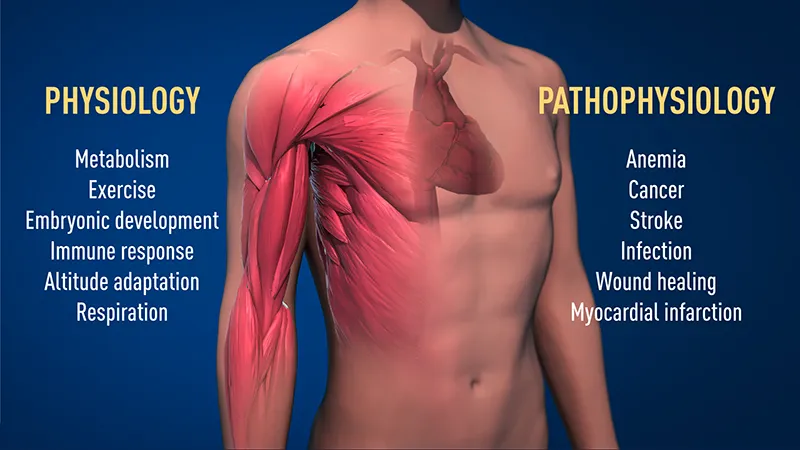THE SCIENCE
Of Altitude Training
The Power Of Your Body
Hypoxic Training For Physical Wellness & Performance
The longer you train in high altitude environments, the more red blood cells your body produces in response to the lower oxygen levels available.
This process is called erythropoiesis (EPO). In a nutshell, this adaptation enhances the blood’s oxygen carrying capacity which improves oxygen delivery to working muscles during exercise.
What we know is that training in a low oxygen environment forces our bodies to work harder and that oxygen serves as the primary source of energy for our cells.
We all need oxygen to convert food into energy. The fundamental importance of oxygen has been understood for centuries, but how cells adapt to changes in levels of oxygen has long been unknown.
In the last decade, there have been many studies about oxygen and how our bodies process it.
In 2019 William G. Kaelin Jr., Sir Peter J. Ratcliffe and Gregg L. Semenza were jointly awarded the Nobel Prize in Physiology or Medicine for their discoveries of how cells sense and adapt to oxygen availability.
The press release of the October 7, 2019, The Nobel Assembly at the Karolinska Institute states:
“A key physiological response to hypoxia is the rise in levels of the hormone erythropoietin (EPO), which leads to increased production of red blood cells (erythropoiesis). The importance of hormonal control of erythropoiesis was already known at the beginning of the 20th century, but how this process was itself controlled by O2 remained a mystery.”
Start Altitude Training Today!
Key Mechanics
Red Blood Cells
When your body adapts to lower oxygen levels seen in high altitudes, more red blood cells are produced enhancing the blood’s oxygen carrying capacity. This improves oxygen delivery to working muscles during exercise.
Oxygen Utilization
Oxygen utilization includes improvements in mitochondrial density and function within muscle cells and enhanced capillarization which facilitates oxygen exchange between blood and tissues.
Breathing Patterns
As you adjust to the hypoxic conditions, your breathing patterns change, leading to an increased respiratory rate and depth to maintain adequate oxygen intake. This can lead to improved respiratory muscle strength and endurance over time.
Anaerobic Energy
Adaptations in anaerobic energy systems like increased buffering capacity to tolerate higher levels of lactic acid buildup during intense exercise, like high-intensity, short duration activities, can occur during altitude training.
VEGF and EPO
Growth factors like vascular endothelial growth factor (VEGF) and erythropoietin (EPO) can be released when in hypoxic conditions. These promote angiogenesis (formation of new blood vessels) and erythropoiesis, respectively, facilitating oxygen transport and utilization.
Neuromuscular
Neuromuscular functions such as alterations in muscle fiber recruitment patterns, motor unit firing rates, and muscle activation strategies, may change in altitude training. These adaptations can contribute to improvements in strength, power, and coordination
Metabolic
Contact Us
Questions ?
We are happy to connect with you over the phone as well. Let us know how we can reach you and/or provide you more information.
Call us @ 1-647-641-8117

